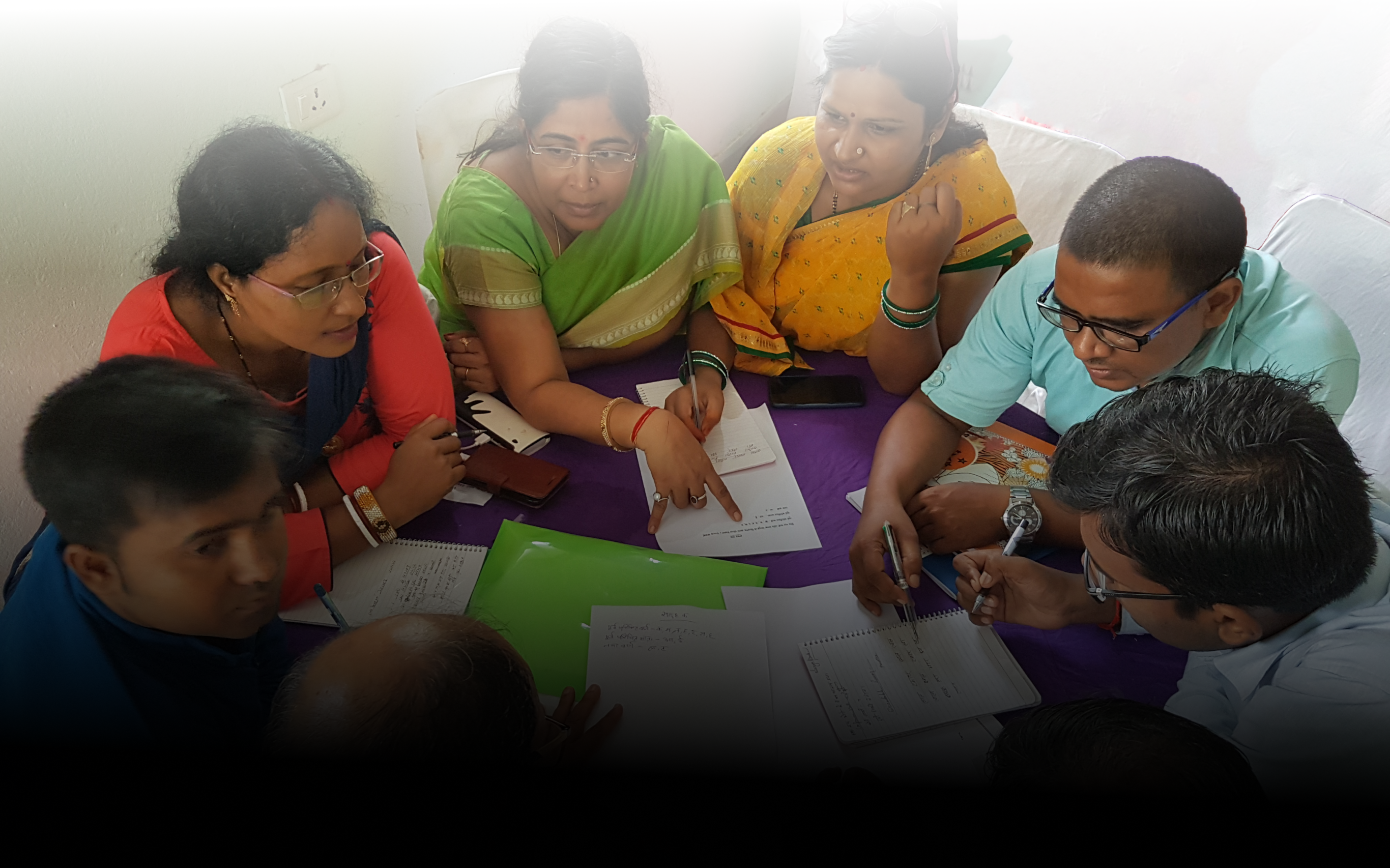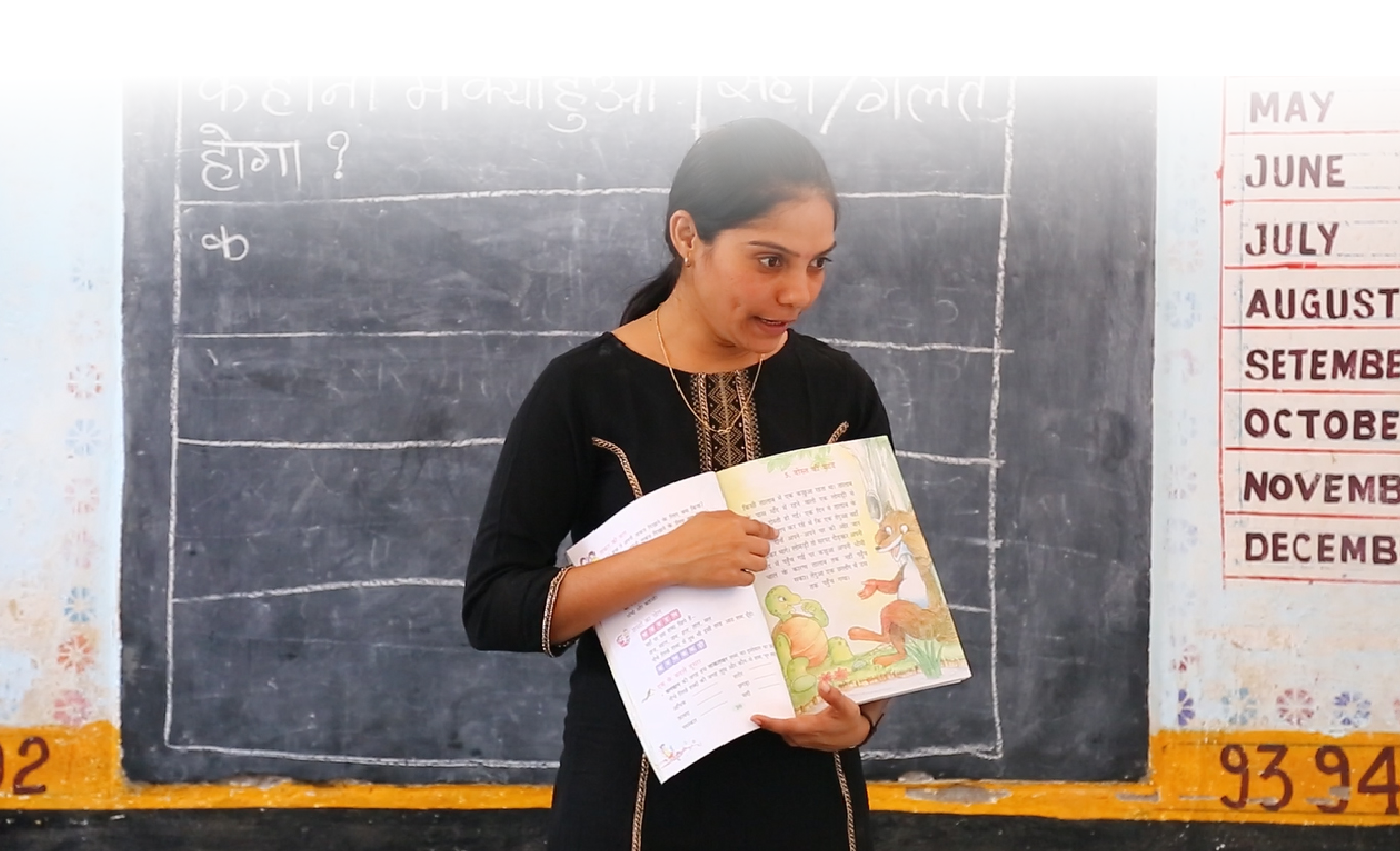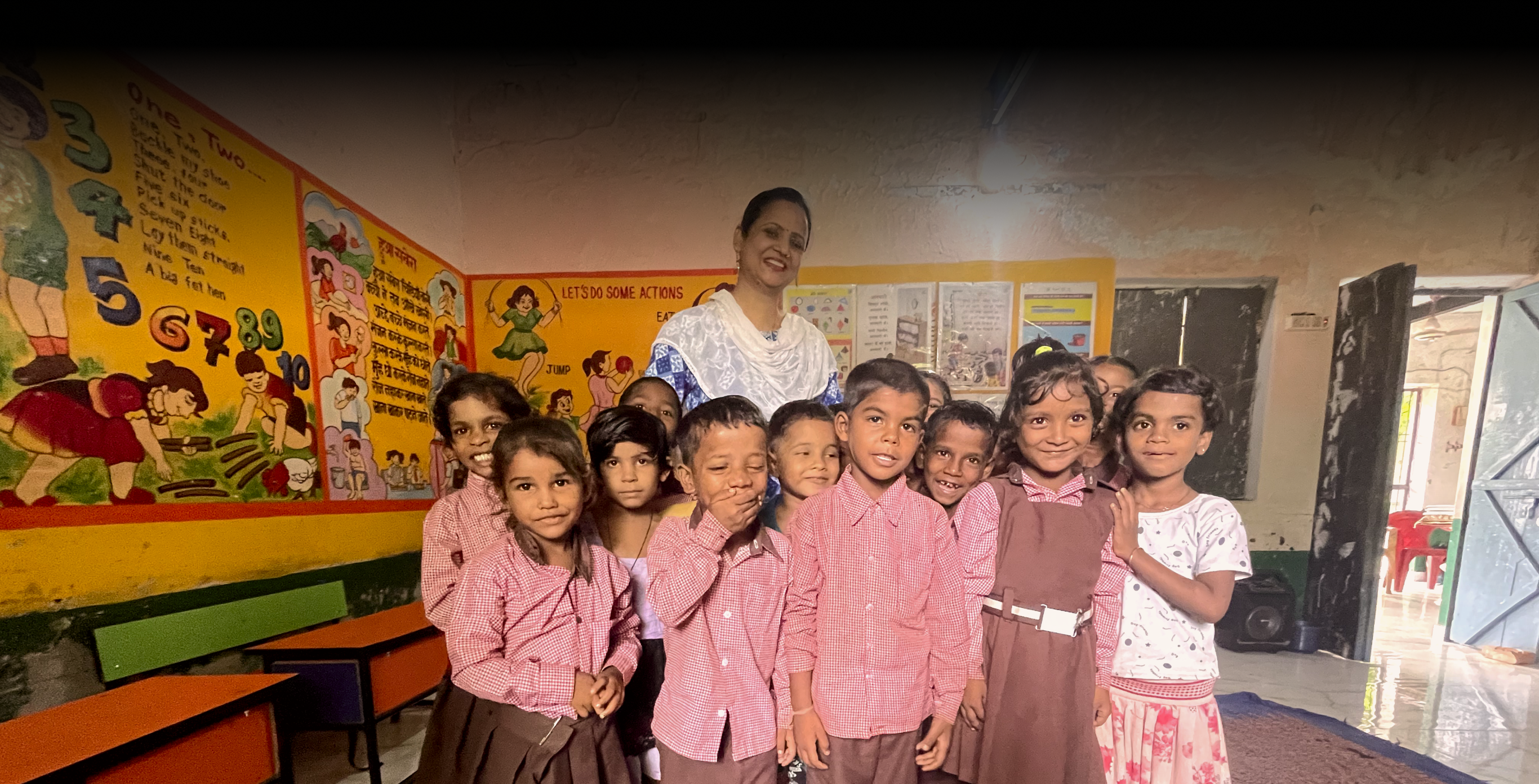

2.5 Lakh+
teachers, academic and administrative staff have undergone our courses and workshops and are trying to bring about a change in the FLN classrooms.






“One significant improvement as a result of the Prarmbhik bhasha shikshan course 2016 is the increase in interactive reading in my class. I have understood better what goes into pre reading, during reading and post reading. Now I encourage children to make predictions, I ask questions to stimulate their higher order thinking, I connect their reading with writing tasks and much more. I had never thought about these lines earlier! In fact, now I also ensure a print rich class for my children, even if it means that I need to spend from my own pocket
With such change in my classroom practices, I can see clearly the change it is bringing about in my children – how they are becoming more and more confident, more and more engaged and how they are turning into avid readers!”
Pushpa Shukla
Assistant Teacher, Government Primary School Sahispara Rajim, Chhattisgarh
“My experience as a course participant has been remarkable. The course talks about language, its importance and strategies of teaching language. The course is delivered through introductory calls, main calls, tasks, quizzes, assignments and discussion forums. The course has helped me teach my children with the learning I have gained.”
Dr. Dilip Kumar Tiwari
Assistant Teacher, Uttar Pradesh
“This course has served as a stepping stone from me . I had been teaching language for many years but the course gave a new direction and perspective of language teaching . Not only had it helped me flourish as language teacher but also as a language resource person for the state and the district. I have formed a Professional Learning Community by the name ‘Neev’ through which I am trying to bring about a change in the language teaching of the teachers of my district. “
Ms. Alpa Nigam
Head Teacher, Primary School Tilauli, Gorakhpur, Uttar Pradesh

